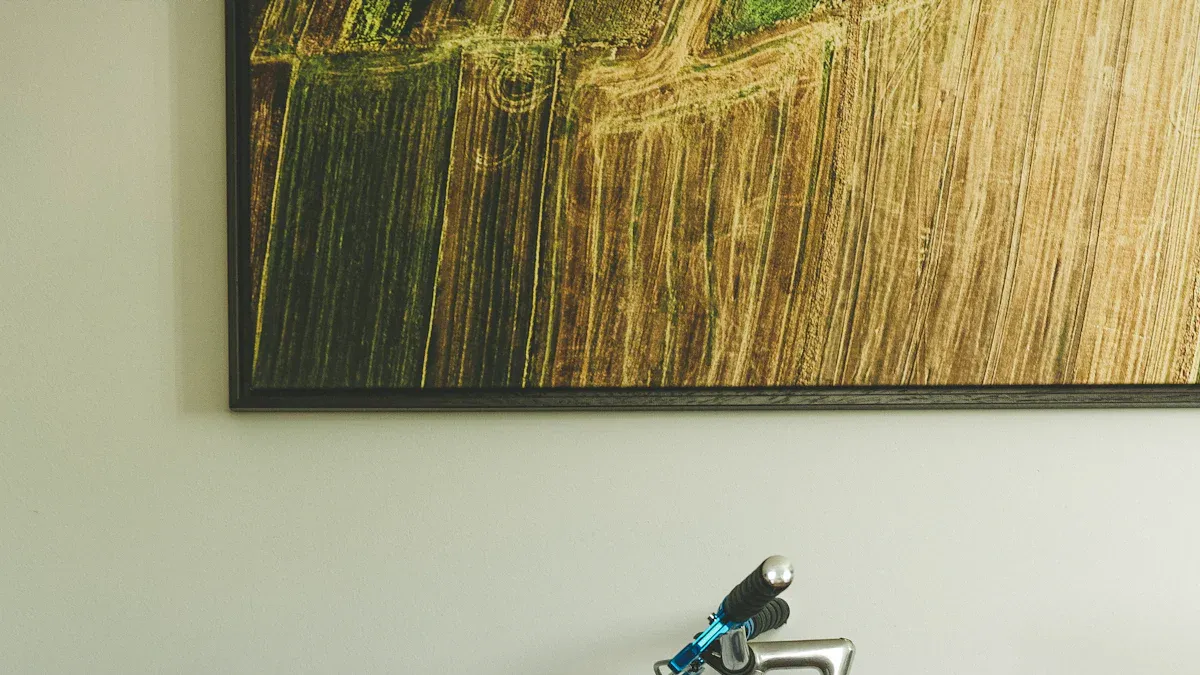
When you compare bike frame dimensions, you might feel lost in a sea of numbers. Bike brands use different sizing, so labels can mislead you. That’s why stack and reach give you the best way to judge fit across bikes. Modern tools, like Geometry Geeks, let you search thousands of bike models, compare stack and reach, and see how small changes affect comfort and handling. You get side-by-side views of bikes, so you can match geometry to your body and riding style. The right bike feels natural—these tools help you find it.
Key Takeaways
Stack and reach are the best ways to compare bike frames. They show how tall and long the bike feels. – Bike geometry, like angles and lengths, changes comfort, handling, and performance. This matters more than frame material or parts. – A good bike fit stops pain and injury. It matches frame geometry to your body and riding style. Small changes help but can’t fix a wrong frame size. – Use online tools and geometry charts to compare bikes. This helps you see how changes affect your ride. – Always test ride bikes before you buy. This helps you feel comfort and control. Do not trust only old sizing methods or numbers.
Bike Frame Dimensions
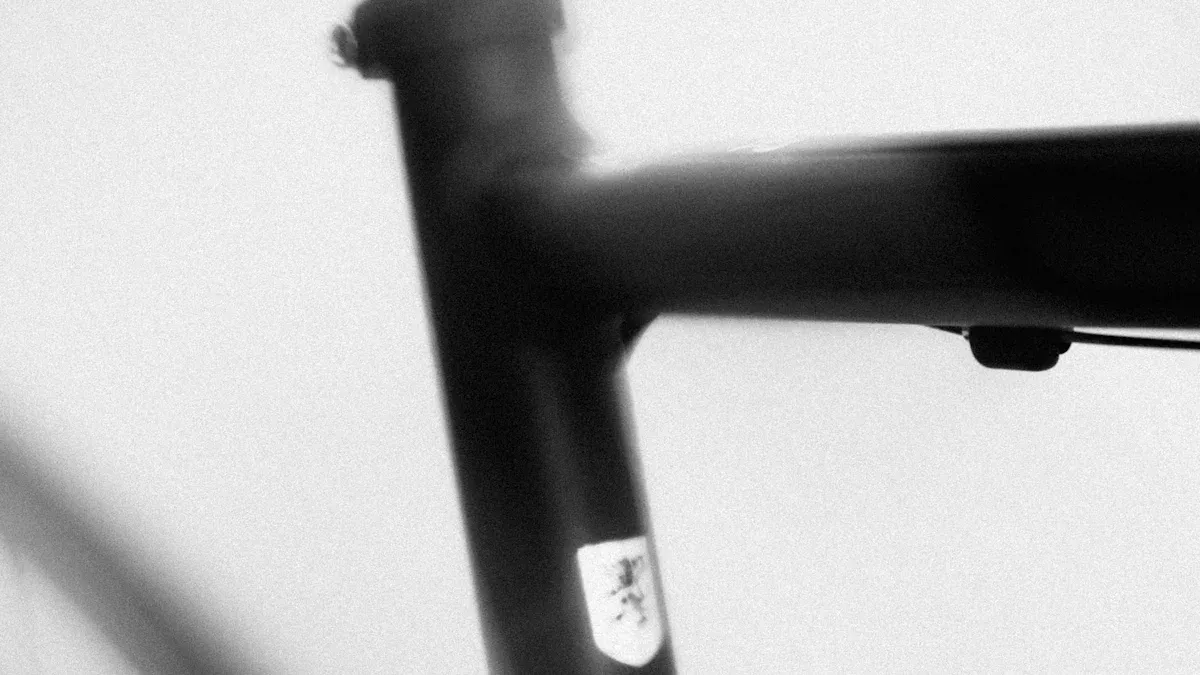
When you look at bike frame dimensions, each part matters. Every part changes how the bike feels and moves. Let’s talk about the main measurements and how they affect your ride.
Stack and Reach
Stack and reach are important for bike geometry. You will see these numbers on most charts. Stack is the height from the bottom bracket to the top of the head tube. Reach is the length from the bottom bracket to the top of the head tube. These measurements help you compare bikes from different brands. They work even if the frames look different.
Tip: Stack shows how tall the front of the bike is. Reach tells you how long the area where you sit feels.
Stack and reach help you know if a bike feels upright or sporty. A higher stack gives you a relaxed, upright position. A lower stack puts you in a lower, faster position. Reach changes how stretched out you feel. A longer reach means you are more stretched. A shorter reach keeps you closer together. You can change stack and reach a little with spacers or a different stem. But you cannot change them much. Sometimes, bikes with the same stack and reach still feel different. This happens because other parts of the frame matter too.
Stack and reach are better than old sizing methods. Old ways used top tube and seat tube lengths. Those ways could be confusing because frames are not all the same. Now, stack and reach help you compare bikes better. You can find the right fit for your body and how you ride.
Top Tube and Seat Tube
Top tube and seat tube lengths are classic bike measurements. The seat tube length matches your leg length. It helps you pick the right size. The top tube length changes how far you reach forward. This affects how you sit and how comfortable you are.
Measurement | What It Does | Why It Matters |
|---|---|---|
Seat Tube Length | Matches leg inseam, sets frame size | Ensures proper leg extension |
Top Tube Length | Controls reach and posture | Affects comfort and riding position |
City bikes have short top tubes compared to seat tubes. This keeps you upright and comfy. Road bikes have longer top tubes. This makes you lean forward and go faster. How these two measurements work together changes the frame shape and how the bike fits you.
Seat tube angle is also important. Steeper angles move you forward. This helps you climb and ride tough trails. Slacker angles move you back. This makes the ride smoother on bumpy ground. You can move your saddle to adjust your fit. But the frame shape is the main thing.
Slacker angles make the ride softer and let the frame bend more.
Top tube length keeps your body in the right spot when the seat tube angle changes.
Head Tube and Angles
Head tube angle is a big part of bike geometry. It changes how the bike turns and handles. Road bikes have head tube angles between 72° and 74°. Mountain bikes have angles from about 70.5° for cross-country to less than 69° for downhill. Gravel bikes are around 71°, which balances control and steadiness.
Bike Type | Typical Head Tube Angle | Impact on Steering Responsiveness and Stability |
|---|---|---|
Road Bikes | 72° to 74° | Quick, responsive steering; less stable at speed |
Mountain Bikes (MTB) | XC ~70.5°, DH <69° | Stable at speed; heavier, slower steering |
Gravel Bikes | Around 71° | Balanced handling |
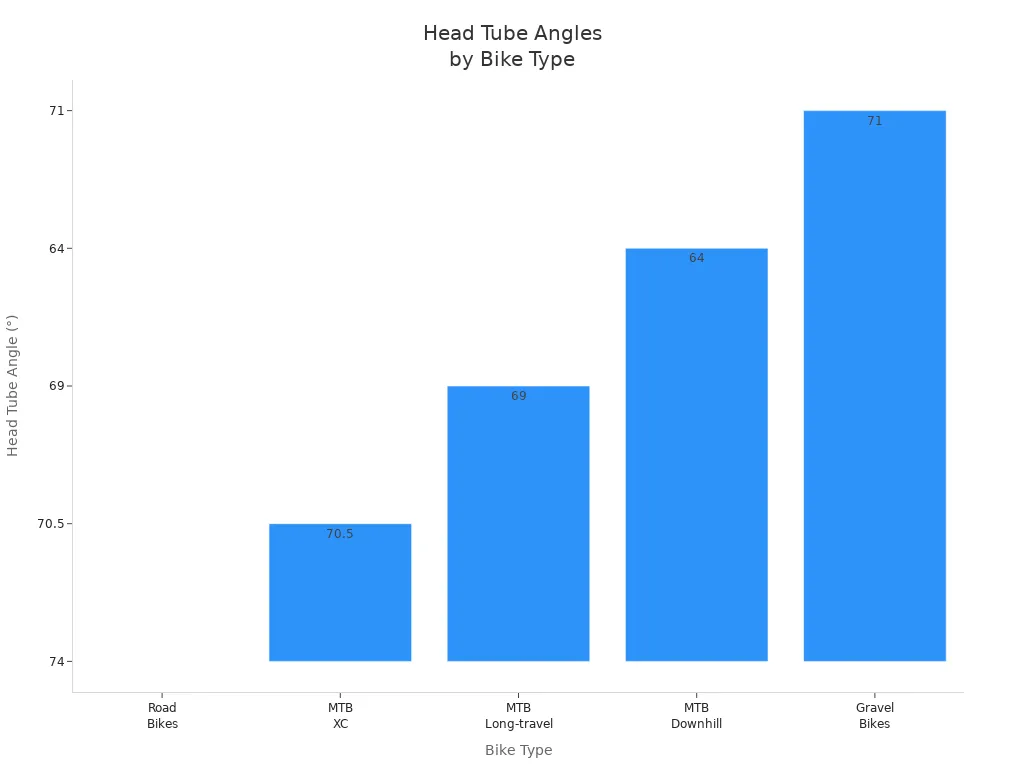
Steeper head tube angles make turning fast and easy. This is good for sharp corners and city rides. Slacker angles slow down turning but make the bike steadier. This helps on fast hills or rough trails. The head tube length also changes how high your handlebars are. This affects how you sit and how comfy you feel.
Chainstay, Wheelbase, Bottom Bracket
Chainstay length, wheelbase, and bottom bracket height are also important. Chainstay length goes from the bottom bracket to the back axle. Short chainstays make the bike quick and easy to turn. Long chainstays make the bike steady, help with climbing, and give more space for bags.
Short chainstays: quick turns, easier tricks, sporty feel.
Long chainstays: steady ride, better climbing, smoother ride.
Wheelbase is the space between the front and back axles. A long wheelbase makes the bike steady at high speeds and smooth over bumps. A short wheelbase makes the bike easy to turn on tight trails.
Bottom bracket height sets how high the bike sits. Higher bottom brackets help you go over things but can make the bike less steady. Lower bottom brackets make the bike steadier, especially going downhill, but you might hit your pedals.
Long wheelbase: steady, smooth, good for going downhill.
Short wheelbase: quick, easy to turn, good for cross-country.
High bottom bracket: more space, less steady.
Low bottom bracket: better control, more pedal hits.
All these measurements work together to change how your bike feels and fits. When you look at bike frame dimensions, check everything—not just one number. This helps you pick the best bike for how you ride and what feels good.
Bike Geometry Comparison
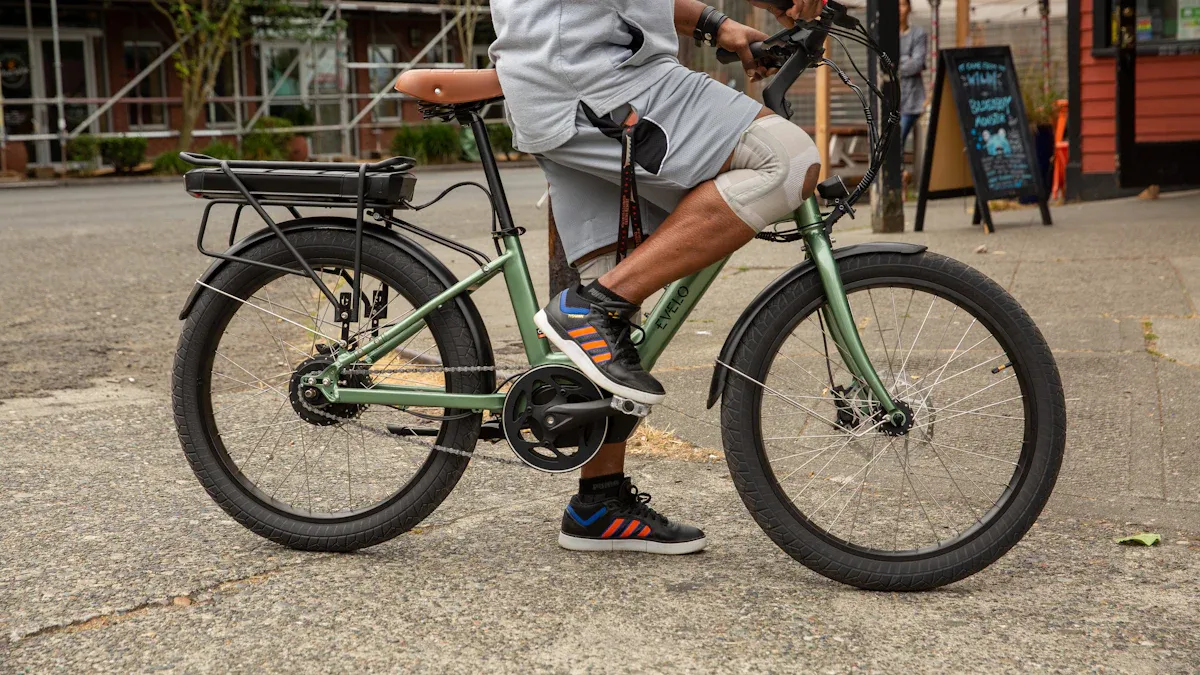
Why Geometry Matters
When you compare bike geometry, you look at more than numbers. Geometry changes how your bike feels when you ride. The angles and lengths in the frame decide if your bike is quick, steady, or comfy. You can feel the difference right away. A slack head tube angle helps you control the bike on fast downhills. A steeper seat tube angle makes climbing hills easier. These changes in frame geometry affect how your bike handles bumps, turns, and long rides.
Experts say geometry is why bikes feel different, even with the same frame material. Geometry controls how stiff the bike is and how it handles bumps. It also changes how energy moves through the bike. Each frame geometry gives you a special ride feel. When you compare bikes, look at geometry first. Comparing frames by geometry helps you know how a bike will work for you.
Note: Geometry matters more than frame material or fancy parts. The right frame geometry makes your ride smoother, safer, and more fun.
Fit and Comfort
You want your bike to fit your body well. Frame geometry and bike fit work together for this. When you compare bike geometry, check stack and reach first. These numbers help match the bike to your height, arms, and riding style. A good frame comparison uses these to find the best fit.
Bike fit is not just about comfort. It keeps you safe and helps stop pain or injury. If your bike geometry matches your body, you can ride longer without hurting. A pro bike fit uses your inseam, torso, and arm length to pick the right frame geometry. Adjusting saddle height, handlebar spot, and reach helps a lot. You feel less pressure on your joints and muscles. You avoid numbness, knee pain, and back aches.
Good bike fit boosts power and comfort.
Right saddle height and handlebar reach help your posture.
Small changes in frame geometry can stop injuries.
Bike geometry comparison helps you find a bike that feels right. You sit in a way that supports your body. You pedal better and enjoy every mile. Regular fitting and test rides keep your bike fit as your body or riding style changes.
Handling and Performance
Handling and performance depend on frame geometry. When you compare frames, you look at head tube angle, wheelbase, and reach. These change how your bike turns, handles bumps, and goes fast. A steeper head tube angle and short wheelbase make your bike quick. You steer fast and turn tight corners easily. A slacker head tube angle and long wheelbase make your bike steady. You feel safe on fast downhills and rough trails.
Geometry Feature | Handling Effect | Performance Impact |
|---|---|---|
Steep Head Tube Angle | Quick, agile steering | Better for technical riding |
Slack Head Tube Angle | Stable, less twitchy | Safer at high speeds |
Short Wheelbase | Nimble, easy to turn | Good for tight trails |
Long Wheelbase | Stable, smooth ride | Better for downhill and speed |
Stretched position, stable | Faster descents, improved balance | |
Short Reach | Upright, comfortable | Easier climbing, better control |
Bike geometry comparison shows how each frame setup changes your ride. Race bikes use lower stack and longer reach for speed. Endurance bikes use higher stack and shorter reach for comfort. Mountain bikes with long, low, and slack geometry handle rough ground better. You pick the frame geometry that fits your riding style.
Frame comparison helps you see how geometry affects power, efficiency, and control. You notice sharper handling, smoother rides, and better climbing. The right bike geometry gives you confidence and makes every ride fun.
Tip: Always use stack and reach for frame comparison. These measurements stay the same across brands and models, making bike geometry comparison easier and more accurate.
Comparison Tools
Online Geometry Databases
You can compare bikes fast with online geometry databases. These websites make it easy to look at frame sizes. Bike Insights is a top pick for many riders. You can search for any bike and see its geometry chart. You can also compare two bikes side by side. The site lets you add your own bikes and save builds. You can get tips from other riders too. Diagrams show how each bike fits your body. 99 Spokes is another good website. It gives you overlays, specs, and live data from brands and users. You can read reviews and see trends for thousands of bikes. The Cycrown blog suggests Bike Insights, Geometry Geeks, and Forma. These tools show clear charts and let you check every detail.
Tip: Always look at the geometry chart before buying a bike. Online databases give you the best way to compare frames.
Side-by-Side Comparison
You can use side-by-side tools to see how two bikes compare. These tools show stack, reach, seat tube angle, and more. You can see how small changes affect comfort and handling. You can adjust for stem length, spacers, and saddle setback. Matching bottom bracket to seat and seat to stem helps you get the same feel on different bikes. Side-by-side comparison makes it easy to spot differences. You get a chart that shows every measurement. Many riders use these tools to pick rental bikes or compare new ones to old ones. You can see how geometry changes your riding position and comfort.
Compare stack, reach, and angles directly
Adjust for stem, spacers, and saddle setback
Easy-to-read chart for frame comparison
Real examples help you match bikes to your needs
Geometry Calculators
Geometry calculators help you see how frames compare. You enter your measurements and see how each bike fits. These calculators show diagrams and charts that are easy to read. You can compare bikes from different brands. You can see how changes in geometry affect your ride. Many calculators let you save your favorite bikes. You can compare them later. You get quick feedback on fit, comfort, and handling. Geometry calculators work with online databases for the best results.
Note: Using calculators and charts helps you make smart choices. You can see every detail before you buy a bike.
Compare Bikes: Step-by-Step
Measure Yourself
Before you compare bikes, you need to know your own measurements. This helps you find the right bike frame size and fit. Here’s a simple way to get started:
Height: Stand straight against a wall. Measure from the floor to the top of your head. This gives you a general idea for road bike sizing.
Inseam: Place a book between your legs, like a bike seat. Measure from the floor to the top of the book. This number is key for standover height.
Reach (Ape Index): Stretch your arms out. Measure your arm span and subtract your height. If your arms are longer, you may need a bigger frame.
You should also check for clearance between the top tube and your crotch. For a road bike, aim for about 2 cm. For a mountain bike, 4 cm is better. These steps help you avoid discomfort and make sure the bike fits your body.
Use Geometry Charts
Now you can use geometry charts to compare bikes. Manufacturers include important numbers like stack, reach, seat tube length, head tube angle, chainstay length, and wheelbase. These numbers show how the bike will fit and handle. Stack and reach are the best way to compare bikes across brands. If you know your current bike’s stack and reach, you can see if a new bike will feel the same or different.
Tip: Always look at the chart for each bike. Check how changes in geometry affect comfort and control.
Here’s a sample chart comparing two bikes:
Metric | Race Bike | Adventure Bike | What Changes |
|---|---|---|---|
Head Tube Angle | 72° | 70.5° | Stability |
Seat Tube Angle | 74° | 73° | Power |
Reach | 390 mm | 375 mm | Position |
Stack | 575 mm | 595 mm | Comfort |
Chainstay Length | 425 mm | 440 mm | Handling |
Wheelbase | 1025 mm | 1048 mm | Stability |

Match to Riding Style
Think about how you want to ride. Do you want speed, comfort, or adventure? Geometry changes everything. Racing bikes have a lower stack, longer reach, and steeper angles. This gives you a fast, aggressive ride. Touring or commuting bikes have a higher stack, shorter reach, and slacker angles. This makes the ride more upright and stable.
Geometry Factor | Racing Bike | Touring/Commuting Bike | What It Means |
|---|---|---|---|
Stack | Lower | Higher | Lower is faster, higher is comfier |
Reach | Longer | Shorter | Longer is stretched, shorter is upright |
Chainstay Length | Shorter | Longer | Shorter is nimble, longer is stable |
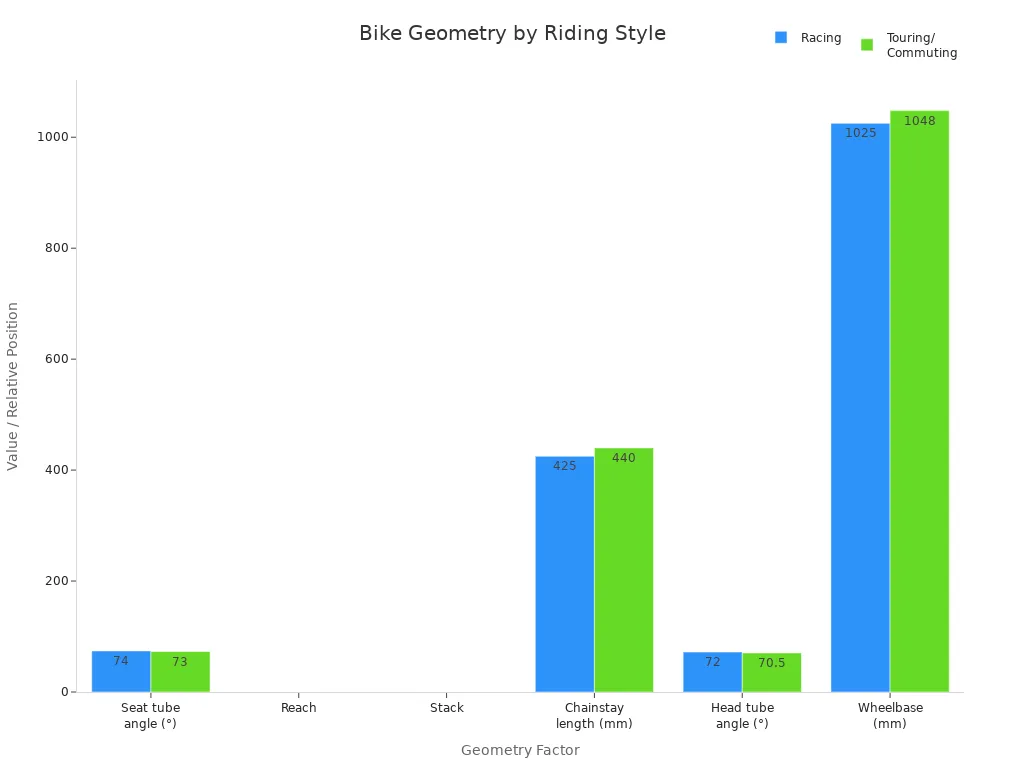
Choose the geometry that matches your goals. If you want to race, pick a bike with sharp angles and a long reach. For comfort or long rides, look for a bike with a relaxed geometry.
Test and Adjust
You should always test ride before you decide. A test ride lets you feel the fit and see how the bike handles. During the ride, pay attention to your comfort, posture, and how easy it is to control the bike. Adjust the saddle, handlebars, and pedals if needed. Sometimes, small changes make a big difference.
Professional fitters watch you ride and make changes based on how you look and feel. They check saddle height, handlebar reach, and your position on the bike. This process helps you avoid pain and get the best performance. Remember, the best fit comes from both measurements and real riding.
Note: Test rides and adjustments help you find a bike that feels like an extension of your body. Don’t skip this step when you compare bikes.
Mistakes to Avoid
Overlooking Key Dimensions
You might think picking a bike by height or wheel size works, but that’s a shortcut that often leads to trouble. Height alone gives you only a rough guess. Wheel size doesn’t tell you anything about how the frame fits your body. You need to look at more than just seat tube length or top tube length. These measurements change from brand to brand and don’t always match your proportions. If you have long legs and a short torso, or the opposite, you need to pay extra attention to geometry. Larger frames might seem better, but they can feel awkward if your body doesn’t match. Smaller frames can make handling tricky and reduce comfort. Always check stack, reach, and effective top tube length. These numbers help you find a bike that matches your shape and riding style.
Tip: Don’t rely on old sizing tricks like straddling the bike. Modern frames use compact designs, so you need to focus on geometry for a proper fit.
Misreading Charts
Geometry charts look confusing at first. You might see numbers for stack, reach, seat tube angle, and top tube length, but not know what they mean for your ride. Manufacturers measure these numbers in different ways, so comparing bikes across brands can get messy. If you misread a chart, you could end up with a bike that’s way too long or too short. This can cause saddle sores, numbness, and shoulder pain. Handlebar height and position also depend on more than just stack. Stem length, spacers, and steerer tube height all play a part. Don’t just look at the numbers—think about how the geometry affects your comfort and control. If you feel unsure, ask for help from a professional bike fitter.
Common Chart Mistakes | What Happens |
|---|---|
Ignoring seat tube angle | Poor power and posture |
Overlooking reach | Stretched or cramped fit |
Misjudging stack | Uncomfortable handlebar spot |
Ignoring Personal Fit
You need a bike that feels right for your body. Ignoring personal fit can lead to pain, poor performance, and even injury. If you pick a frame just because it looks cool or matches a chart, you risk bad weight distribution and awkward handling. Some riders try to fix a poor fit by sliding the saddle way back or using a super long stem, but that’s not a real solution. You want a bike fit that supports your spine, shoulders, and arms. Professional bike fitters look at your flexibility, riding style, and goals to recommend the best geometry. They help you avoid mistakes like sizing down and making too many adjustments. A good fit means you ride longer, feel better, and enjoy every mile.
🚴♂️ Remember: Your comfort and safety depend on matching geometry to your body, not just picking a frame by numbers.
When you compare bike frames, focus on stack, reach, and the whole geometry. These numbers help you find a bike that fits your body and riding style. Experts say you should measure your inseam, adjust your saddle and handlebars, and use online tools for the best match. Before you buy, ask yourself what kind of riding you want to do. Try out different bikes, make small changes, and see what feels right. Take your time—your comfort and fun depend on it!
FAQ
What is the most important measurement when comparing bike frames?
Stack and reach matter most. These numbers show how tall and long the frame feels. You can use them to compare bikes from different brands. They help you find the right fit for your body and riding style.
Can I adjust a bike’s fit if the geometry is not perfect?
You can make small changes. Try adjusting the stem, adding spacers, or moving the saddle. These tweaks help, but they cannot fix a frame that is too big or too small.
Why do bikes with similar numbers feel different?
Bikes feel different because of small changes in angles and lengths. Even if stack and reach match, things like head tube angle or chainstay length change the ride. Always test ride if you can.
How do I know if a bike is too big or too small for me?
You feel stretched out or cramped.
You cannot touch the ground easily.
Your knees hit the handlebars.
If you notice these signs, the frame size may not fit you well.
See Also
How To Determine The Perfect Bike Frame For You
Guide To Using Bike Frame Size Charts Correctly
The Importance Of Selecting Proper Bike Frame Geometry
